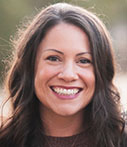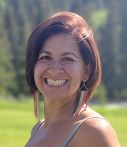It’s a Wrap: California Science Education Conference 2024
By Debbie Gordon, CASE President
As we near the end of 2024 I asked the 2024 Science Education Conference Chairs to reflect on the successes and challenges of this year’s conference and ended with a couple of questions for the 2025 Conference Co-chair, Crystal Starr Howe, about what to expect in Palm Springs next October 17-19 . Here’s what they had to say.

Debbie Gordon

Kelli Quan

Amy Kraft

Crystal Starr Howe
Debbie Gordon (DG): How would you evaluate the overall success of the conference? What aspects worked particularly well, and what could be improved?
Kelli Quan and Amy Kraft (KQ/AK): When we consider the goals of the science conference to provide opportunities for science educators to grow professionally in order to improve student outcomes and promote access to high-quality science education, then we can confidently say that the conference was a success. We strived to provide workshops led by individuals who are in the field, performing the work every day. We also made changes in the review for proposals to focus hands-on engagement opportunities for attendees. Additionally, our review process focused on prioritizing workshops that were timely to what is currently happening in the world of science (e.g., CAST, Science on the Dashboard, SB285 - Climate Change Education, Diversity, Equity and Inclusion, etc). The conference elevated, supported and developed new voices and leaders in the science education community through pre-conference, motivating keynote and focus speakers, networking opportunities, and workshops that applied to classroom and non-classroom educators.
(DG) Which sessions or workshops seemed to be of most interest to attendees? Which received the most positive feedback from attendees and why do you think those sessions resonated most?
(KQ/AK) With the variety of topics and diverse backgrounds of presenters and attendees, many topics were of high interest, including the following: Data Talks, CAST, grading, integration of science with other disciplines (e.g., math and ELA), notebooking, making science accessible to our diverse learners, and, of course, hands-on science lessons.
(DG) In what ways were attendees able to connect with each other, both professionally and informally?
(KQ/AK) There were multiple opportunities for connection throughout the conference. During pre-conference we were able to partner with the California Mathematics, Computer Science, Science Partnership and provide opportunities for members to network with their local county office and/or regional science education partners to develop their leadership capacity.
The conference officially kicked off with an interactive keynote where attendees united to create musical melodies that filled the entire ballroom. This was followed by workshops that provided collaborative opportunities to meet new individuals and partner together as they discovered engaging phenomena, discussed noticings and wonderings and/or developed a new instructional skill. On Friday evening, CASE partnered with the Exploratorium to provide, “The Science Behind the Sound: An Interactive Reception” where attendees could engage with sound phenomena with other attendees from the conference. Friday and Saturday also provided short courses and a field trip experience for attendees to spend a longer segment of time learning about a particular topic and collaborating.
Moving forward we are exploring the idea of offering meet up opportunities throughout the conference for first-time attendees, affinity groups, job-alike groups, and pre-service teachers.
(DG) How can we improve the conference to ensure it’s more accessible to all participants throughout California?
(KQ/AK) We’re hoping to reach out to presenters to offer webinars and in-person events throughout the year and throughout the state, including more remote areas specifically in the northern counties.
(DG) Were there any recurring themes or suggestions in attendee evaluations that we should address in future conferences?
(KQ/AK) We haven’t seen the attendee evaluations yet, but based on what people told us at the conference, they want more sessions showcasing high school lessons and real world phenomena.
2025 Conference Preview
(DG) Moving forward, how can we improve the diversity, equity, and inclusion efforts of the conference to ensure it’s more accessible to all participants?
Crystal Starr Howe (CSH) We keep doing better in these efforts. I would like us to specifically ask CASE members with a variety of needs (hearing, visual needs, mobility needs) to share with us what support would best allow them to participate in the conference and use their responses to plan for a larger variety of member needs. I also want to make sure our conference committee represents the diversity of educators across CA so that we bring the variety of ideas to the planning table
(DG) Do you think the conference achieved its goals in advancing the field of science education? In what ways did we make an impact?
(CSH) Yes! Educators left the conference feeling empowered to bring high quality lessons and instruction to their students. They learned more about their own content areas, about engaging students, and about ways to encourage their colleagues to grow their practice. The spreading of learning and enthusiasm from our conference presenters and exhibitors, to the members and nonmembers who attended conference, and then to the peers they work with advances our impact in an exponential way.
In the end, Dr. Emdin's Closing Keynote clearly gave us a foundational reminder that to reach our students, we need to leave our egos at the door, connect with them as humans, and make science clear, engaging, and relevant to the actual children in front of us. Growing this message truly allows for science instruction to move towards high quality student interactions across the state.
(DG) Looking ahead, what can we expect from the Science Education Conference 2025?
(CSH) Even more joy in science and science education! Bringing our science educators together to learn, grow their practice, and feel excited to go back to their own sites to teach! I am looking forward to a return of our boat race (maybe with a relay?) and a focus on growing NGSS in the state.
Thank you Kelli, Amy, Crystal, and all the staff, volunteers, and our members that work with enthusiasm and passion to further science education for all students in California. To all our members (and future members), please have a safe and happy holiday season.
We will see you in 2025!




